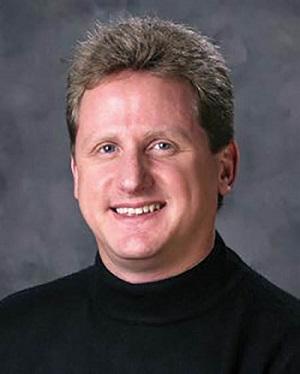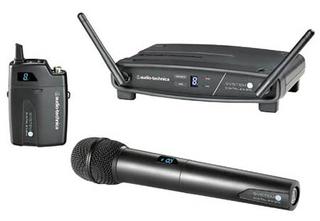Big Shows Require Wireless Audio Stability

Katy Perry performs during Super Bowl XLIX halftime.
NEW YORK—The entire universe, it seems, is going wireless, including everyone who makes a living speaking into a microphone. Being tethered to a cable is so old school. But spectrum is finite, and the FCC’s most recent bidding competition, Auction 97, brought in nearly $45 billion—a sum far greater than expected—proving that broadcasters will continue to face pressure from outside sources. As broadband device manufacturers continue to grow their positions in the market, the demand for wireless microphone systems that are fast and agile will escalate.
NEW PRODUCTS AWAIT
In January, Sennheiser filed responses to a pair of FCC rulemaking notices on the subject of wireless spectrum. Joe Ciaudelli, director of U.S. Spectrum Affairs for the Old Lyme, Conn.-based company, says that Sennheiser has made specific recommendations and comments addressing spectrum allocation, and that production on the next round of the company’s wireless devices is pending.
“Production lines cannot be configured until all frequency and other regulatory parameters are firmed up,” Ciaudelli said. “There will be pockets within 600 MHz— the guard bands— where microphones will be able to operate. The amount of spectrum to be repurposed, and therefore the frequencies of the guard bands, will not be known until after the incentive auction.”
How valuable will the 600MHz range be to the broadband companies who have invested so much capital already in the upper range auctions? “Higher frequencies mean greater bandwidth in each the down and up links and shorter propagation distances,” said Henry Cohen, senior RF design engineer and project manager for CP Communications, an Elmsford, N.Y.-based provider of pro audio rental gear. “[This] give carriers the ability to deploy more cell sites without self or co-channel interference [and] results in more simultaneous subscriber activity within the same overall market.”
Cohen—along with long time industry veterans James Stoffo, Jamie Schnakenberg and Mark Gubser—is a founding member of Radio Active Designs, a Lincoln, Neb.-based company formed in direct response to the FCC’s 600MHz auction and the introduction of white space devices. Stoffo was also charged with ensuring that audio functions at the 2015 Super Bowl came off smoothly, including Kay Perry’s halftime show.
“Every Sennheiser microphone used during the recent Super Bowl was live,” Stoffo said, “but it’s important to note that more than 50 percent of the frequencies used on events like this one involve backstage wireless communications. We created RAD so that these special events can continue to function and operate under increasingly difficult conditions.”
Get the TV Tech Newsletter
The professional video industry's #1 source for news, trends and product and tech information. Sign up below.
The Katy Perry set covered the entire field including the airspace above the field, according to Stoffo. “She was flown all over the field from one goal post to the other and everywhere in between,” he said. “Her five Sennheiser SK-5200 wireless transmitters were live and clean to me the entire time and she also wore a wireless IEM pack that performed flawlessly for the entire halftime show. Stoffo adds that in addition to range issues, the entire stage was made out of LED lights which presented a great interference challenge. RAD overcame this by using very tight helical antennas and a very tightly filtered RF system.
Stoffo said that wireless communications are used not only to move props and cue talent, but are a life safety factor and can save lives on large special events. “This was one of our primary objectives when designing the system-to ensure safe communications from the person transmitting on the belt pack,” he said. “The other prime directive was to achieve the greatest amount of radio spectral efficiency of any wireless system on the professional market.”

Mark Brunner, senior director of Global Brand Management at ShureWHITE SPACES, TOO
Mark Brunner, senior director of Global Brand Management at Shure is an advocate for the broadcast industry in the ongoing debate over white space usage. Brunner believes that the volume of bidding that took place in the 700 MHz range indicates that activity in the lower, less desirable ranges will likely be high.
According to Brunner, the Nile, Ill.-based pro audio company developed its Axient product line when it became obvious that agile and robust wireless devices would become critically important. “The ability to seamlessly detect and shift between frequencies to avoid interference is a characteristic of the Axient line and any other wireless technology seeking to be competitive in the current market,” Brunner said.
The ULX-D, now over two years old, was Shure’s first truly professional digital wireless system. In high-density mode the ULX-D offers upwards of 47 wireless microphones in a single television channel. Last year, Shure released the QLX-D, a less expensive digital system.
Brunner says that Shure has been aggressive in addressing the white space issue. “We’re attacking the bandwidth problem in two ways: recognizing that there will continue to be a reduction in spectrum to operate in—and that it will be more crowded— Shure has been honing its technologies on both spectral efficiency and robustness from interference.”
Brunner adds that the company is tracking developments at the FCC closely. “We recognize that a second major transition in the UHF band may render some pro productions as we know them today much more difficult—if not impossible—to pull off,” he said. “Producers of broadcasts for the Super Bowl, NBA All-Star Game, Grammy Awards and other major nationally televised events are increasingly concerned that they will run out of bandwidth. The insatiable appetite for mobile broadband is driving an equation that continues to push over-the-air television into a corner.”

Audio-Technica System 10FREQUENCY-AGILE
Sony Professional Solutions of America is also aggressively developing products that will help its customer base adapt to rapidly changing circumstances, according to Andy Munitz, professional audio product manager/national training manager. “We’re well aware of the challenges that face producers of broadcast television as well as large venues such as sports arenas and centers,” he said. Munitz said Sony has three ranges of wireless microphone products, including the DWZ Series, which is based on the 2.4 GHz spectrum; and the UWP-D and DWX series, which is Sony’s high-end fully digital system, used in broadcast TV applications.
Munitz pointed out the Sony cross remote feature, which he touts as one of the important aspects of the DWX Series. The feature allows users to control many of the operational parameters of the transmitter without having to touch it. “Channels can be changed, the low cut filter frequency can be altered, the name can be changed, and the unit can even be put to sleep to save battery life, just to name a few, all by remote control from a distance,” he said. “The fact that our ENG receivers slot into our own shoulder camcorders means that we offer a direct AES/EBU digital connection in the audio section of the camera.”
Audio-Technica designed the System 10 to operate within the 2.4 GHz range and be able to avoid the congestion and regulatory uncertainty associated with the TV bands, according to Karen Emerson, media manager for the Stow, Ohio-based company. “This is hardly a sudden pivot for us,” she said. “Our innovative SpectraPulse ultra-wide band digital wireless system, for example, released in 2007, operates well outside the TV bands in the 6-10 GHz range. And the System 10’s immediate predecessors—System 8 and System 9—both operate in the VHF traveling bands. So we’ve been focusing on these solutions for a while.
“While it is certainly true that there’s a lot of activity within the 2.4 GHz range—Wi-Fi, microwave ovens, etc.—System 10 is a frequency- agile system capable of continually detecting and adjusting its frequency to operate without interference,” Emerson added.
As the current generation of smartphones gives way to successors that will incorporate more computing powered devices built by large conglomerates with great political access, the pressure on those who produce content for broadcast and live events will continue to mount. Making sure that these producers have wireless technologies that will allow them to work uninterrupted is mission critical for the manufacturers who serve their needs.
